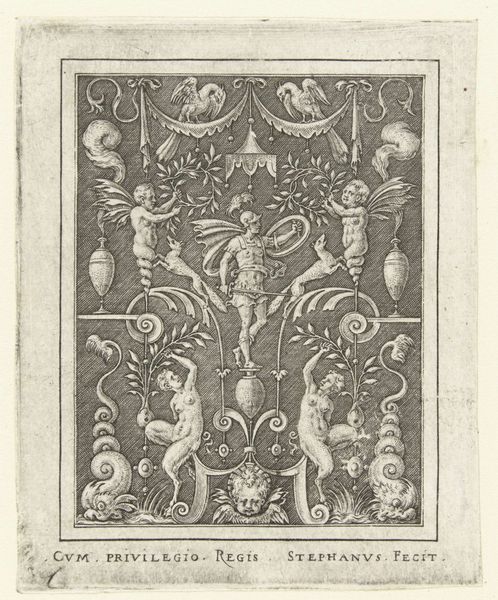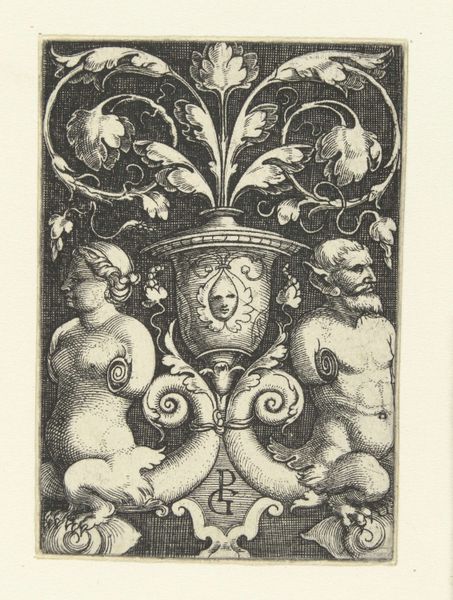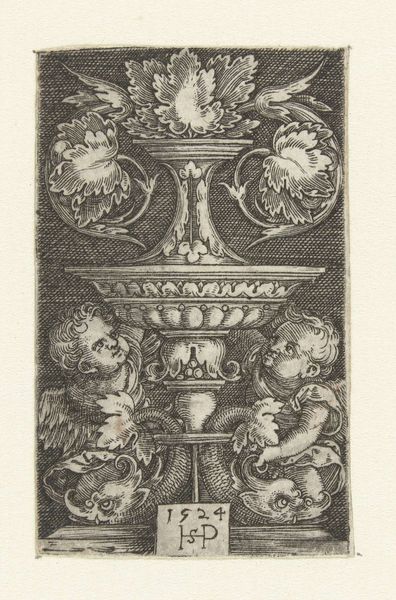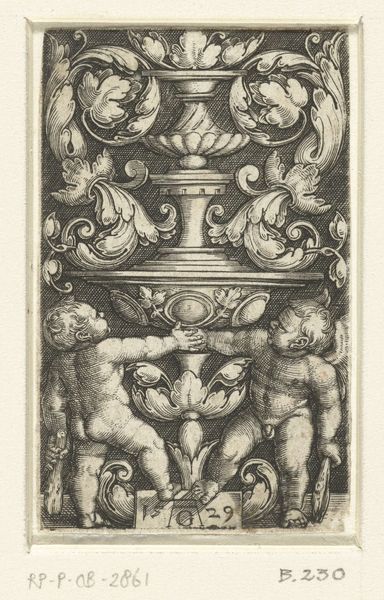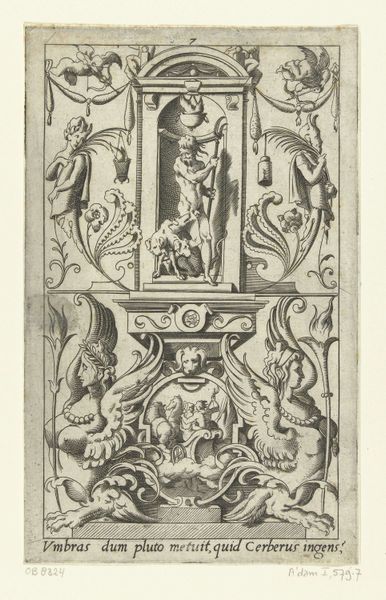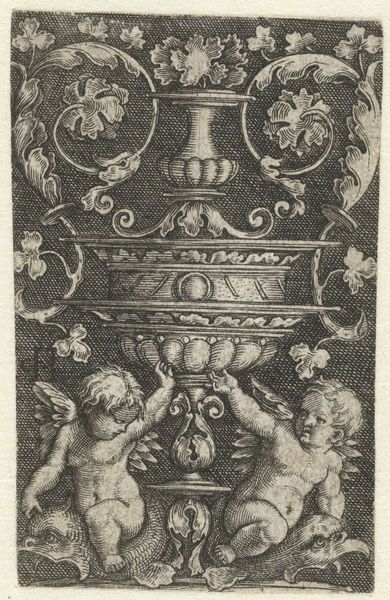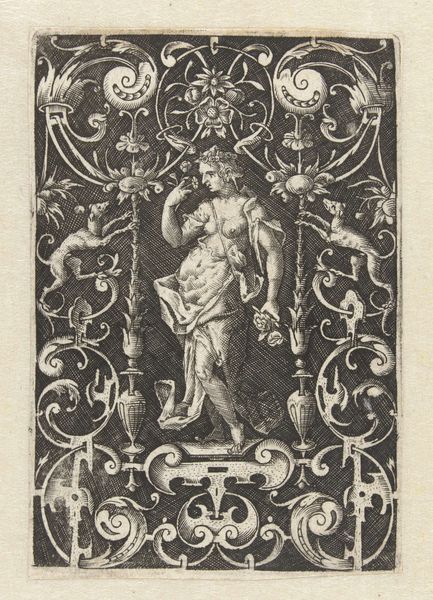
print, engraving
# print
#
figuration
#
genre-painting
#
northern-renaissance
#
engraving
Dimensions: height 54 mm, width 30 mm
Copyright: Rijks Museum: Open Domain
Curator: Gosh, it's bursting with… tiny, overachieving babies! And quite ornate too, in that aggressively cheerful Northern Renaissance way. Editor: That’s "Vlakdecoratie met twee putti," or "Surface Decoration with Two Putti." It’s an engraving from around 1526, created by Sebald Beham. The museum possesses an exquisite print of it. It really speaks volumes about the era's obsession with ornamentation. Curator: Ornamentation barely begins to cover it! Look at the detail. Every millimeter crammed with flourishes, tendrils, chubby cherubs wrestling with, what are those, dolphins? Everything vying for attention. A total sensory feast! Almost a little... anxious making. Editor: Those 'cherubs', or putti, became very popular during the Renaissance. The image blends pagan and Christian imagery. Winged cherubs support what appears to be a complex candelabra. Symbolically, putti represent divine love, mediation, or playful spirits that help communicate deeper levels of human existence. And the dolphins? Linked to resurrection or transformation—diving into new realms. Curator: So it's like... happy scaffolding? Divinely inspired decoration to, I dunno, make a really fancy butter dish? Imagine commissioning *this* for your kitchen table! It’s completely bonkers and rather inspiring if you consider it on a metaphysical level. Like, what truth are those angels and their chubby rolls protecting? What sublime message could that fancy butter dish contain? Editor: Exactly! We’re engaging with cultural memory through images. Renaissance folks believed beauty itself had transformative power, pointing towards harmony and the divine order. To surround themselves with intricate works like these wasn't simply decorative. They felt the emotional and psychological impact from continuous interaction. This resonates even now, centuries later. Curator: So much intent, such dense messaging. It reminds me that everything we surround ourselves with—even the everyday, like that hypothetical butter dish—ends up sculpting who we are, what we become. Bit frightening, that thought, actually. Editor: It truly offers insight into not only their aesthetic tastes but the philosophical framework through which people perceived and interpreted the world back then. What’s more— we still can. It is quite nice.
Comments
No comments
Be the first to comment and join the conversation on the ultimate creative platform.

